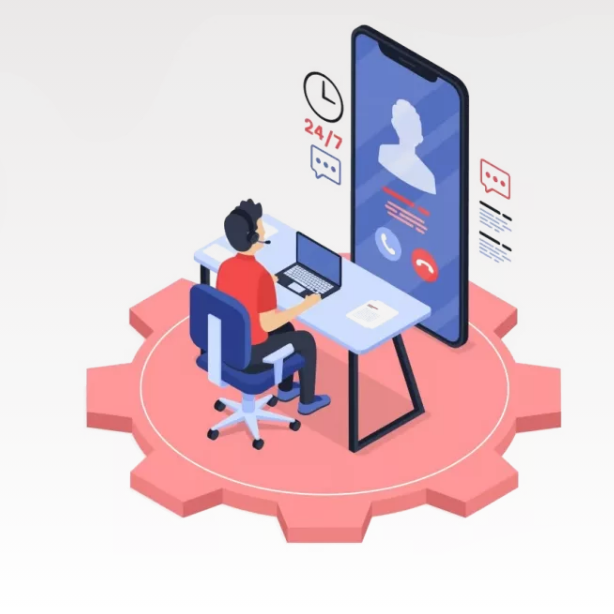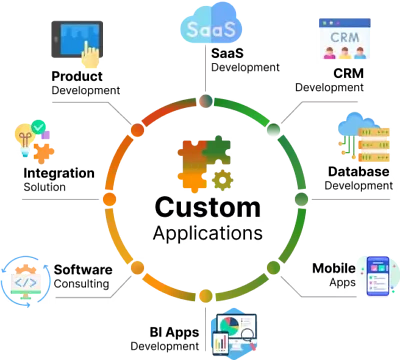How RPA (Robotic Process Automation) is Reshaping IT Support Services

In the ever-evolving landscape of technology, businesses are continuously seeking ways to enhance efficiency, reduce operational costs, and streamline service delivery. One revolutionary innovation that is making waves in the IT sector is Robotic Process Automation (RPA). As organizations increasingly rely on IT support and services to manage their digital infrastructure, RPA emerges as a transformative tool, redefining how IT support functions are delivered and managed.
In this article, we explore how RPA is reshaping IT support services, the benefits it offers, key use cases, and what businesses should look for in an IT service provider that embraces automation.
What is Robotic Process Automation (RPA)?
Robotic Process Automation (RPA) is a technology that uses software robots, or “bots,” to automate repetitive, rule-based tasks that were traditionally performed by humans. These bots can mimic human actions such as logging into systems, extracting data, processing transactions, and communicating with other digital systems.
Unlike traditional automation, RPA works on the user interface level, which allows it to operate across various applications without the need for deep system integration. This flexibility makes RPA a valuable tool in IT support and maintenance services.
Why RPA is a Game Changer for IT Support and Services
1. Improved Efficiency and Speed
- Bots work 24/7 without fatigue.
- Tasks that once took hours can now be completed in minutes.
- Real-time responses to support tickets and system alerts.
2. Cost Reduction
- Reduces the need for manual labor.
- Cuts down operational costs by automating routine processes.
- Scalable solutions without proportional increases in headcount.
3. Enhanced Accuracy and Consistency
- Eliminates human error in repetitive tasks.
- Ensures compliance with standard operating procedures.
- Provides consistent performance every time.
4. Better User Experience
- Faster ticket resolution times.
- Round-the-clock availability.
- Predictive maintenance reduces unexpected downtimes.
5. Improved Resource Allocation
- Frees up IT personnel for strategic and complex tasks.
- Supports innovation by reducing time spent on routine support functions.
Key Areas Where RPA is Impacting IT Support
Automated Ticketing and Incident Management
RPA bots can automatically log incidents, categorize them, assign priority levels, and route tickets to the appropriate team. This not only speeds up the support process but also reduces backlogs and human errors.
System Monitoring and Alerting
Password Resets and Access Management
Software Deployment and Updates
Data Backup and Recovery
Automated backup routines and monitoring by bots ensure data integrity and reduce the chances of data loss. In the event of a system failure, bots can initiate recovery protocols promptly.
Benefits for IT Service Providers
- Competitive Advantage: Offering RPA-enhanced services sets providers apart from traditional firms.
- Scalability: Providers can manage more clients without scaling their workforce linearly.
- Improved Client Satisfaction: Faster and more accurate support translates into higher client retention.
- Actionable Insights: RPA tools often come with analytics that help providers improve their services continuously.
IT support and services are being redefined, and companies that align with RPA-driven service models will be better equipped to handle modern IT challenges.
Choosing the Right IT Support and Services Partner
Expertise in RPA Integration
Ensure the provider has proven experience in implementing RPA tools like UiPath, Blue Prism, or Automation Anywhere.
Customizable Solutions
Look for a partner who offers tailored automation solutions based on your unique business needs.
Proven Track Record
Security and Compliance
Ongoing Support and Maintenance
Post-implementation support is crucial. Choose a provider that offers continuous IT support and maintenance services to ensure your systems remain updated and optimized.
Challenges in RPA Implementation
- Initial Investment: Upfront costs for software licenses and setup.
- Change Management: Resistance from staff who may fear job loss.
- Complexity in Processes: Not all processes are suitable for automation.
- Security Risks: Improperly configured bots can lead to security vulnerabilities.
A reliable IT service provider can help navigate these challenges with strategic planning and phased implementation.
Future of IT Support with RPA and AI
- Intelligent Chatbots: Handling complex queries with human-like interactions.
- Predictive Analytics: Forecasting issues before they occur.
- Self-Healing Systems: Systems that detect and resolve issues automatically.
- Hyperautomation: A combination of RPA, AI, and other technologies to automate end-to-end business processes.
Real-World Use Cases
1. Financial Institutions
2. Healthcare Sector
3. Retail Industry
Retailers use RPA to streamline IT support for POS systems, manage inventory databases, and perform routine system diagnostics.
Empowering IT Teams Through RPA Integration
Key Empowerment Benefits:
- Skill Development: IT staff can upskill and shift their focus to areas like cybersecurity, cloud strategy, and system architecture.
- Reduced Burnout: Automating tedious jobs like monitoring logs or updating tickets helps reduce fatigue and job dissatisfaction.
- Increased Collaboration: With routine operations handled by bots, team members can spend more time on strategic projects that require creativity and teamwork.
Managing Change During RPA Adoption
Best Practices for Smooth RPA Implementation:
- Transparent Communication: Clearly explain how RPA will complement, not replace, existing roles.
- Pilot Programs: Start small with a few well-defined tasks before scaling RPA across departments.
- Training Programs: Educate staff on how to work alongside RPA tools, interpret outputs, and troubleshoot minor issues.
- Feedback Loops: Encourage team input and use it to fine-tune bot performance and address concerns.
RPA and Sustainable IT Operations
Sustainable Benefits of RPA:
- Energy Efficiency: Bots use fewer resources and can operate on schedules that reduce energy consumption, such as off-peak hours.
- Paperless Operations: Automating workflows significantly reduces the need for printed documents, contributing to eco-friendly practices.
- Resource Optimization: RPA improves system utilization and performance, reducing the hardware footprint and the need for excessive infrastructure expansion.
Conclusion
Partner with automation-driven experts to boost efficiency and stay future-ready.


